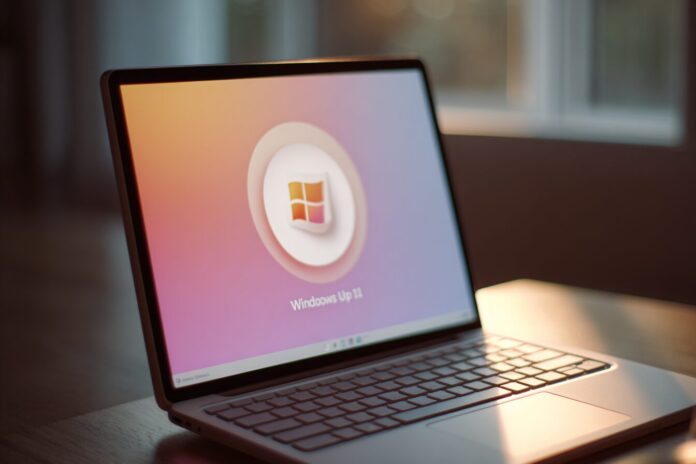Understanding the Unexpected Upgrade Offers
Windows 11 was designed to usher in a new standard for performance, security, and user experience. Because Microsoft took extensive measures to ensure compatibility and security, the operating system demands that devices meet stricter hardware requirements compared to previous versions. Most importantly, only PCs with modern processors, Secure Boot, and TPM 2.0—Microsoft’s trusted hardware security chip—were meant to be eligible. Beyond that, these specifications were set in place to empower both consumers and businesses with a reliable and secure computing experience.
However, in 2025, reports reveal an anomaly: Microsoft has begun offering the Windows 11 upgrade to certain PCs that clearly lack the required specifications. This surprising development has left many users puzzled. Because the upgrade prompt appears even on devices that do not pass the official compatibility tests, both experts and users alike are questioning whether this is a bug or an inadvertent policy shift. For more insight, you can refer to this detailed report.
Diving Deeper Into Windows 11’s Official Requirements
Before exploring the recent upgrade anomaly, it is crucial to reinforce our understanding of what constitutes an eligible device for Windows 11. According to Microsoft, the official hardware requirements include a 64-bit processor (typically 8th generation Intel Core or newer, 2nd-gen Ryzen or newer, or an approved Snapdragon chip), a minimum of 4 GB RAM, 64 GB storage, UEFI firmware with Secure Boot, TPM 2.0, and DirectX 12 compatible graphics with a WDDM 2.0 driver. These guidelines, detailed on Microsoft’s own page, were implemented to ensure that users receive optimal performance and advanced security features.
Because these requirements are more demanding than those for Windows 10, many older yet perfectly functional PCs have been sidelined. Most importantly, Microsoft explicitly communicated these requirements from the start, which is well documented on platforms like Wikipedia and other authoritative tech sources.
The 2025 Upgrade Anomaly and Its Implications
Recent observations indicate that some Windows 10 users encounter unexpected upgrade prompts even when their hardware does not qualify for Windows 11. For instance, a recent case highlighted by a German tech blog detailed how a Dell Latitude 7490, running Windows 10 22H2, has been persistently receiving these prompts despite failing the compatibility check. Because such incidents are being reported across various forums, it appears that this issue is more widespread than initially assumed. Besides that, emerging evidence suggests that the anomaly might be linked to a recurring bug within Microsoft’s upgrade detection logic.
Transitioning from previous upgrade glitches to this current issue, experts believe that the unexpected behavior is likely not a deliberate change in policy. Instead, it may be symptomatic of inaccuracies in the upgrade rollout or server response mechanisms. Most importantly, with Windows 10’s support deadline looming on October 14, 2025, the pressure on Microsoft to push as many users forward to Windows 11 has intensified, prompting more rigorous yet sometimes flawed upgrade initiatives. Detailed information on this subject is available at TechRadar and Dell’s support page.
Risks and Recommendations for Upgrading Unsupported PCs
Because the upgrade prompt may appear tempting, it is critical for users to proceed with caution. Upgrading an unsupported PC to Windows 11 might initially seem like an opportunity to access the latest features, but it also brings several risks. Most importantly, if your device does not meet the official hardware requirements, there is no guarantee that the operating system will work reliably or maintain stability over time. Therefore, it is wise to rely on the PC Health Check tool provided by Microsoft before making any changes.
In addition, unsupported systems may miss out on subsequent feature updates, vital security patches, or critical bug fixes. Therefore, even if the upgrade is successful, degraded performance, driver incompatibilities, or system instability might occur. Because security remains a top priority, Microsoft recommends spending extra time to verify your device’s eligibility. As highlighted by Microsoft’s official documentation, adherence to system prerequisites ensures a smooth and secure upgrade process.
Understanding the Cause: Bug or Policy Change?
One of the most pressing questions is why Microsoft is showing upgrade prompts on devices that don’t fulfill the eligibility criteria. Based on historical data and previous incidents, it is most plausible that this is a technical bug rather than a change in Microsoft’s policy. Microsoft’s earlier communications have repeatedly affirmed that the hardware requirements remain unchanged, and the appearance of the prompts is not indicative of a hidden strategy to override those requirements.
Because the issue resonates with past occurrences, it underscores the challenges that come with managing vast rollout systems during major operating system updates. Transitioning large user bases inevitably reveals unforeseen glitches. Most importantly, IT professionals advise affected users to refrain from upgrading until the issue is officially resolved by Microsoft. More context on these technical challenges can be found through expert commentary on sites like Windows Report.
Practical Steps to Take if Your Unsupported PC Receives an Upgrade Prompt
Because taking a proactive stance can mitigate potential risks, here are several recommendations if your unsupported PC is offered the Windows 11 upgrade:
First, do not immediately proceed with the installation. Instead, verify your system eligibility using the official PC Health Check app available on Microsoft’s website. This tool is designed to confirm whether your device meets the necessary hardware and software criteria for a smooth upgrade experience. Besides that, it provides insights into hardware limitations that might affect performance.
Next, ensure that you back up all important data before any consideration of an upgrade. Because unsupported systems are prone to instability, keeping a secure backup is essential in case you encounter any issues. Additionally, keep an eye on official updates and statements from Microsoft regarding this anomaly, as these communications will offer further guidance on how best to proceed.
Planning for the Future: Navigating Windows 10’s End of Support
With the end-of-support date for Windows 10 fast approaching on October 14, 2025, users who cannot upgrade to Windows 11 are faced with challenging decisions. Most importantly, it is crucial to begin planning for the future. If your current hardware does not support Windows 11, consider evaluating your needs and exploring hardware upgrades that conform to modern standards. In this way, you ensure a more secure and efficient computing environment for the upcoming years.
Furthermore, you may also explore alternative operating systems, such as reliable Linux distributions, as interim solutions until a hardware upgrade is possible. Because security remains paramount, applying final security patches and considering third-party security solutions can help bridge the gap during this transition period. These measures, when taken in a timely manner, can significantly reduce potential risks associated with using end-of-life software.
Conclusion: Proceed With Caution and Stay Informed
In conclusion, although some Windows 10 PCs are receiving Windows 11 upgrade offers, this anomaly most likely stems from a bug in the upgrade detection logic rather than a relaxation of Microsoft’s system requirements. Because the risks associated with installing operating systems on unsupported devices are considerable, users should independently verify hardware compatibility and exercise caution before proceeding.
Therefore, carefully consider your next steps by consulting trusted sources and using the appropriate Microsoft tools to check your system’s readiness. For more detailed information, please refer to trusted resources like TechRadar, Dell’s guidelines, and Microsoft’s official requirements. Most importantly, remain vigilant and stay updated as Microsoft works to resolve this upgrade anomaly.
Reference Links
- Microsoft Offers Windows 11 to PCs That Shouldn’t Get It (Windows Report)
- TechRadar Coverage
- Dell on Windows 11 Requirements
- Windows 11 Wikipedia
- Official Windows 11 Requirements (Microsoft Learn)



